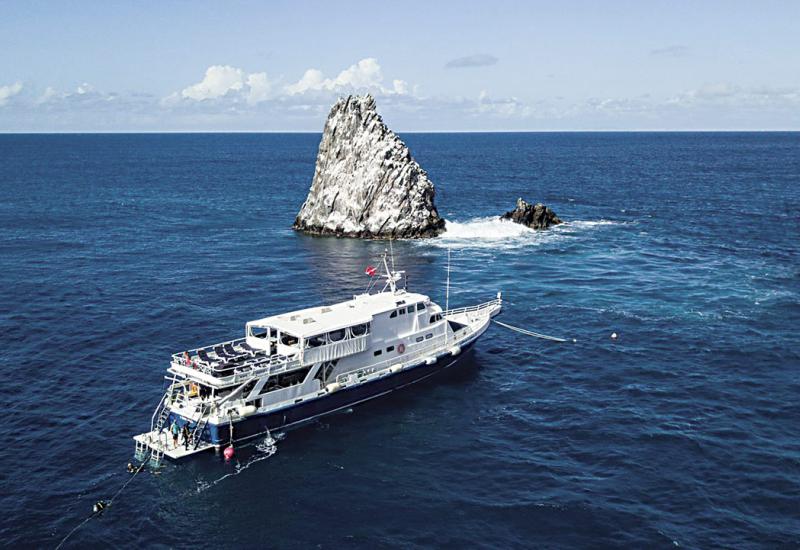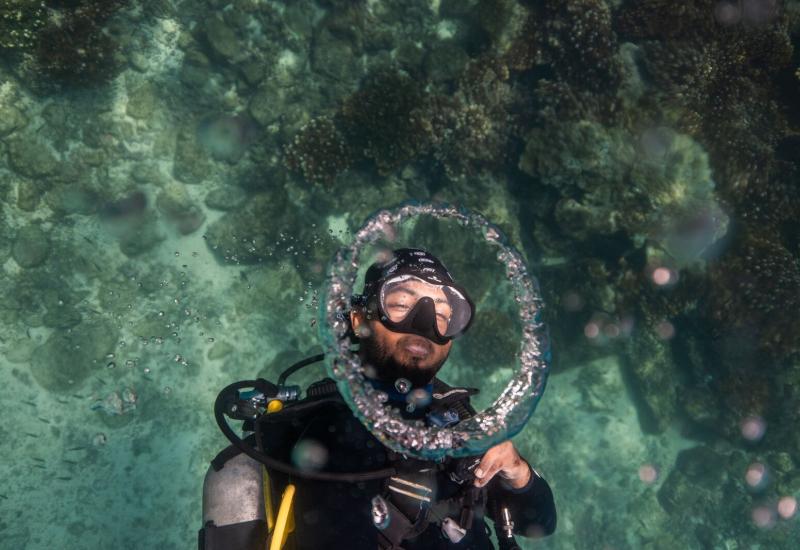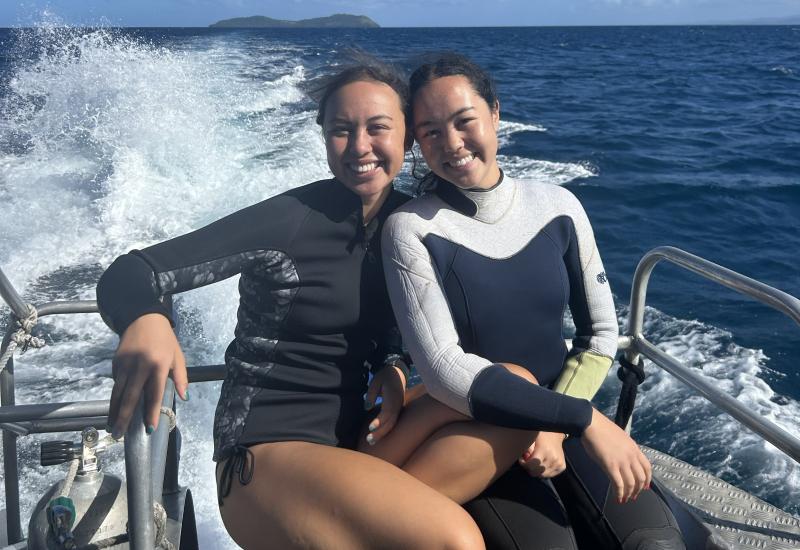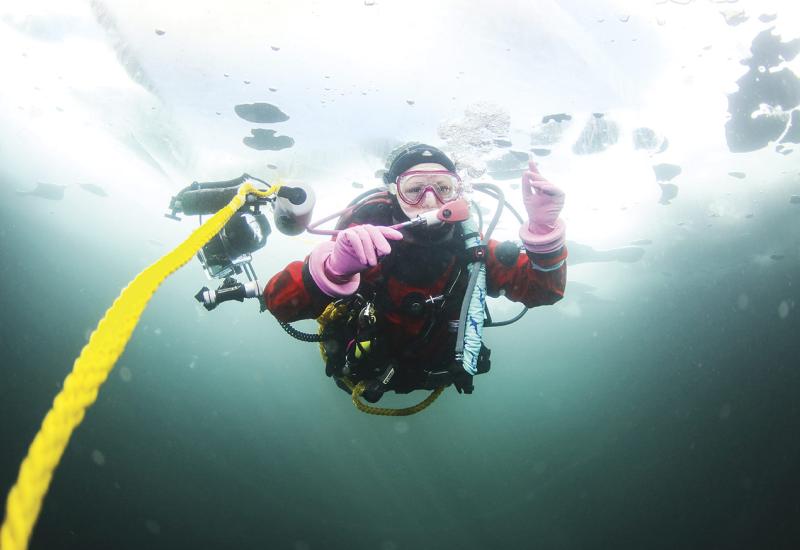The Best Destinations for Wall Diving in 2023
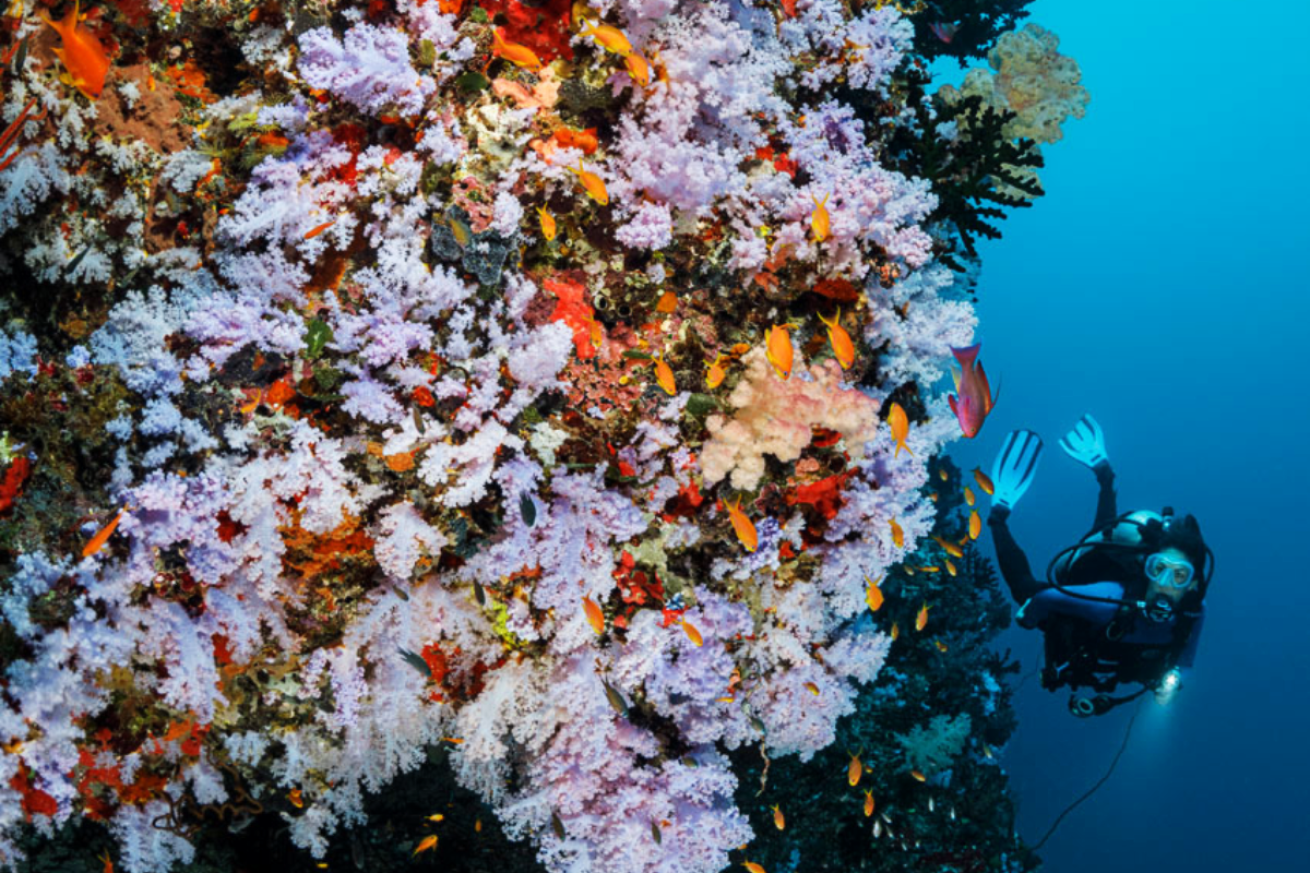
Brandon ColeA diver illuminates the Great White Wall, a standout wall dive in Taveuni, Fiji.
What is Reader's Choice?
More than 3,000 readers cast their vote in our 2023 survey to decide this year’s Readers Choice awards. Here we feature standout destinations in each category, listing in alphabetical order the winning resorts, operators and liveaboards serving those areas.
1. Fiji
Not all weeklong stays to the island of Taveuni, Fiji, are created equal. To dive the best of the best, ask about tides.
The Great White Wall is, hands down, the signature wall dive in this South Pacific destination, and Garden Island Resort is one of the closest dive operators to the main event. Despite its close proximity, the operator is able to drop in just four times a month, sometimes three, depending on tides.
But time it right, and lay eyes on 300 feet of soft corals.
“Shine your light across the whole wall and it appears white, but in reality it’s blue and yellow,” says Phil Morais, owner of the resort. Miss the necessary slack tide, he continues, and “all the corals will be closed, and the wall looks like nothing more than a rock.”
The rest of Fiji’s reefs don’t require special timing. Regardless of tides, they showcase how the destination earned the title of Soft Coral Capital of the World. “So many sites look like underwater rainbows,” Morais says.
Readers Picks
Resorts
2. Belize
Belize has long attracted active types to its mainland jungle, home to fast-paced zip-lining, rappelling and much more. Underwater, it’s no different. Every exploration of a wall is a drift dive. This packs only benefits, says Brittany Haury, operations manager at Belize Underwater, a dive center located about midway along the coast of Belize in an area known as Hopkins. “You see more of the wall in a shorter amount of time—and that makes it more fun,” she says. That always-fl owing water also keeps corals clean and healthy, free of debris that can lead to algae and bleaching.
Belize’s wall diving is exciting not just for the currents but for the leagues of big animals frequently passing by. Eagle rays, for instance, are incredibly common. “Ours are a big, healthy size—not those itty-bitty things,” says Haury.
With the right site, the chances of big finds are higher. The best dive, says Haury, is Trick Ridge, found on the South Water Caye range, right off Hopkins.
Or, not found—if you’re not diving with experienced operators. “It’s an extremely difficult navigational site, but our pros have it down,” Haury says. Follow the wrong ridge line and you’ll end up too deep, or facing a “deep dark hole.” But stay on track, and you’re in for fins. Here, hammerheads are possible, as are other not commonly seen pelagics.
“If I were trying to impress someone, I would take them here. In fact, it’s where we took Kate and William, the royals, when they came diving with us."
Readers Picks
Operators
Liveaboards
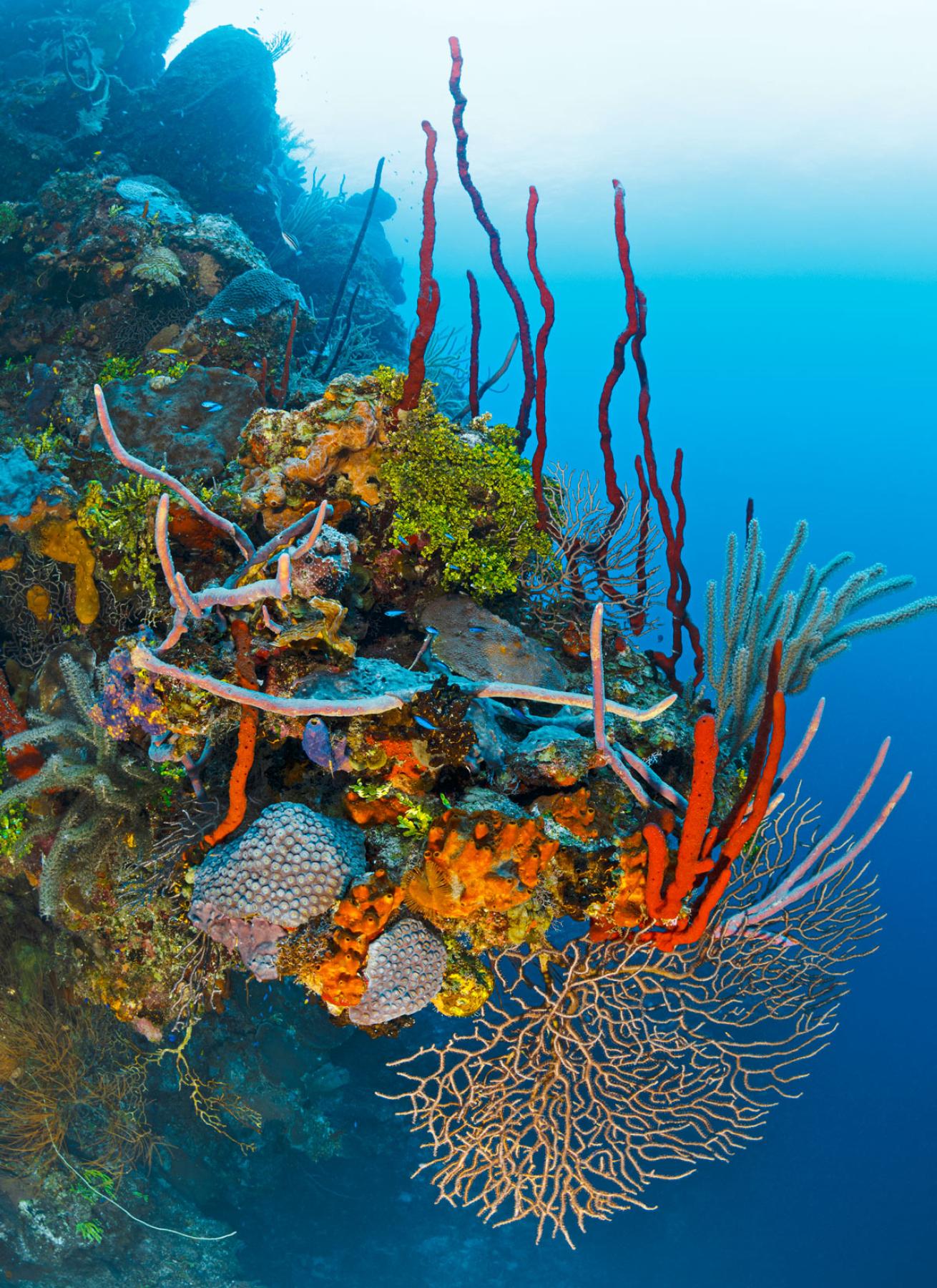
Brandon ColeA colorfully decorated outcropping along a Cayman Islands wall.
3. Cayman Islands
This year-round destination offers wall diving on all three of its islands: Grand Cayman, Little Cayman and Cayman Brac. The diving off Little Cayman is the most famous, and most accessible, with drop-offs starting at just 20 feet.
These dives are anything but drifts, so guides and guests can take their time lingering, whether that’s to set up a camera shot or just admire the vibrancy of the colors—rope, vase and elephant ear sponges crowd the verticals. “There’s so much color it’s like something Disney painted,” says Sarah Jane Harlan, manager with Reef Divers, a scuba operator running underwater tours on all three Cayman islands.
Readers Picks
Resorts
- Cayman Brac Beach Resort, Cayman Islands
Operators
- Reef Divers, Cayman Brac, Cayman Islands
4. Hawaii
You can’t set foot on the island of Niihau, 17.5 miles southwest of the Kauai coast, but you can drop in and dive its walls, considered the best of the two islands—and possibly all of Hawaii.
“The most popular site is called Vertical Awareness, named for the endless visibility,” says Erica Keough, IDC staff instructor with Seasport Divers Kauai, located in the town of Koloa. “The wall drops off at a 90-degree angle, so it can be hard to know how deep you are.”
Much of Niihau offers drift diving, but Keough prefers this site when currents are still. “The walls are filled with cracks and holes for things to hide due to the pancaking layers of lava,” she says.
The critter list includes nudibranchs, flatworms and all manner of crabs. But abundant as it is, the small stuff isn’t what most people remember most from dives here. “A few years back, a whale shark greeted us and cruised with us for more than an hour, circling the pinnacle at the top of the dive site. I think the monk seals and sandbar sharks were jealous of our new friend.”
Readers Picks
Operators
- Aaron’s Dive Shop, Hawaii
- Big Island Divers, Hawaii
- Dive Oahu, Hawaii
- Jack’s Diving Locker, Hawaii
- Kona Honu Divers, Hawaii
5. Mexico
The entire coastline of Cozumel, Mexico, is a wall dive—a 29-mile drop-off.
“We run out of time before we run out of wall,” says Henry Schultz, owner of the Salty Endeavors dive shop on island. “You can cover miles and miles in a single dive.” Divers efficient on air often cruise two sites with one nitrox tank. The island off Cancun is unique not only for how much vertical real estate it offers, but also the topography of its wall dives.
“Here, you can penetrate the wall,” he says, referring to the swim-throughs and tunnels running as veins through the limestone. Some stretches are even concave, making for a dizzying experience.
Between the angles of the drop-offs, the swift currents and the density of life, Cozumel’s walls have a well-earned reputation, leading some divers to request the big ones by name: Santa Rosa, Palancar and Devil’s Throat.
“A lot of people come back to Cozumel just for Palancar,” says Schultz. “Or they come because they just have to see the Santa Rosa Wall.”
Readers Picks
Resorts
- Allegro Cozumel of Barcelo Hotel Group, Mexico
- Casa Del Mar, Cozumel, Mexico
- Cozumel Hotel & Resort, Mexico
- Iberostar Hotels & Resorts, Cozumel, Mexico
- Secrets Aura, Cozumel, Mexico
Operators
- Aldora Divers, Cozumel, Mexico
- Dive Paradise, Cozumel, Mexico
- Dive with Martin, Cozumel, Mexico
- Dressel Divers, Cozumel, Mexico
- Pro Dive International, Cozumel and Riviera Maya, Mexico
- Scuba Club Cozumel Dive Center, Mexico
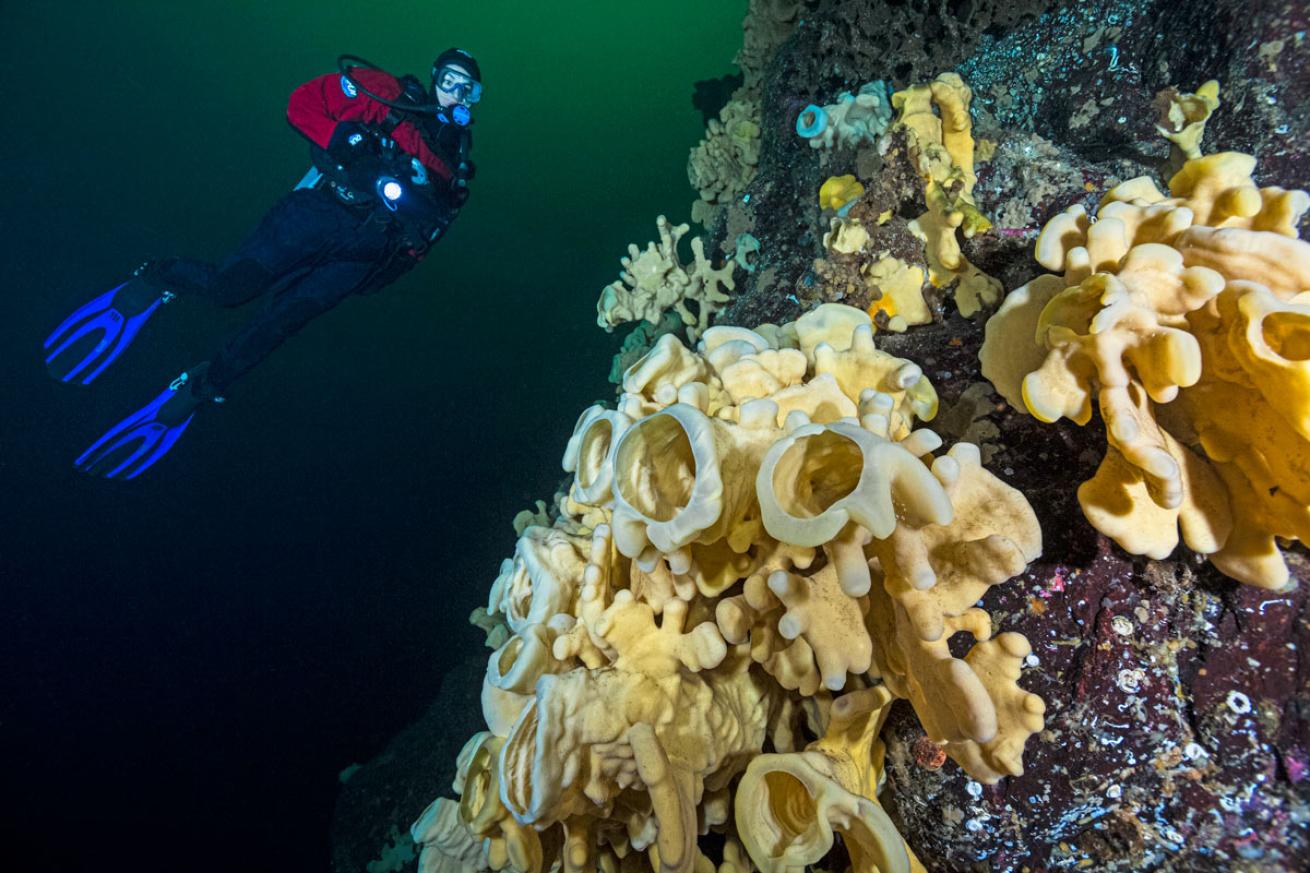
Brandon ColeFragile cloud sponges thrive in the cold depths of British Columbia, Canada.
6. British Columbia
Unofficially the invertebrate capital of the world, British Columbia is the place to visit for an abundance of the stuff. “The sponges are unbeatable,” says Zach Burrows, IDC staff instructor with Ocean Quest, a dive center in Burnaby, just east of Vancouver.
“I don’t think you could ever get tired of the cloud sponges,” he says of the species with lots of folds, looking like a mix between ginger root and vertebrae. “The longer you stare, the more life you find.”
That’s the secret to uncovering the wealth of invertebrate life. Stay still and focus on one patch to spot crabs, nudibranchs and fish such as the decorated warbonnet, an orange-sherbet-colored species that appears to have soft corals sprouting from its forehead.
All of it can be found at places such as Whytecliff Park in West Vancouver. And if the thought of tackling shore diving or drysuits sounds like too much to handle on your own, or even if you’d rather go with an extra, more locally proficient set of eyes, Ocean Quest offers guides-for-hire by the day.
Divers can also request the drysuit course on demand. That specialty is so popular with Vancouver tourists and cold-water newbies that Ocean Quest teaches it daily, typically on a one-to-one basis.
Then you get to jump in.
“You often get to see an octopus on your first cold-water dive,” says Burrows of how readily the magic reveals itself.

